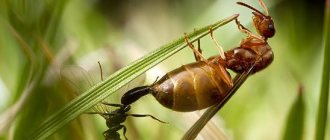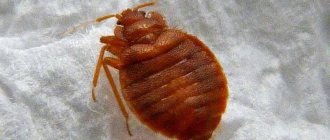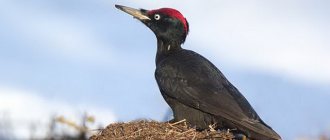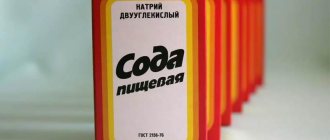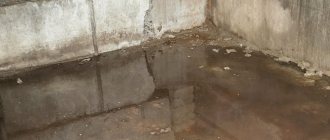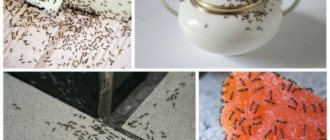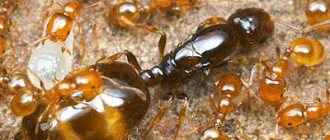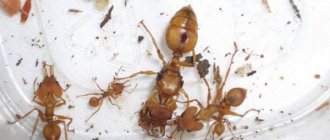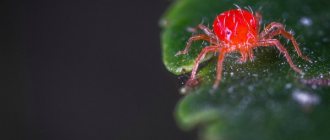Features of the ant family
An ant family is a highly organized community, which includes sexually mature adults (females and males), working individuals (sterile females) and offspring at different stages of development (eggs, larvae, pupae).
The number of individuals in a family can vary from several tens to millions. There are usually several reproductive females in a family (but there may be one), but working individuals are the most numerous part of the community. In a community, there is a division of labor, relationships between individuals, and established mechanisms for solving various problems. All family members act as a single cohesive organism.
Ant queen
The reproductive female (also called the queen or queen) is responsible for reproduction. Outwardly, it is similar to a working individual, but differs in its large size and some features of the body structure, in particular, the presence of wings. The queen mates with the male only once, receiving in the process a supply of seminal fluid, which she then uses throughout her life. After fertilization, the queen bites off her wings, and then either remains in the anthill, or, which happens much more often, leaves it and organizes a new family.
Ant queen
Males
The main role of male ants is to fertilize young queens. Males do not have a sexual organ in the usual sense, but they do have a spermatic duct, from which, during the mating process, sperm enters the female’s spermatic receptacle. Most males are winged and mating occurs after the so-called “nuptial summer.” But there are also wingless insects that remain in the nest and fight with each other for the available young females.
Worker ants
It may seem that the queen is the head of the family, but this is not so. Working individuals play a decisive role in all processes occurring in the anthill. They do not reproduce, but they decide the fate of the females; for example, they can destroy the queen, whose fertility has decreased. In addition, worker ants control the reproduction of offspring (they destroy excess larvae, change the feeding regime). A worker ant is a female with an underdeveloped reproductive system.
In the ant family there is a clear division into castes. Each worker has its own responsibilities. Some get food, others build a nest, others look after the offspring, others are responsible for the cleanliness and order in the anthill, etc.
What do ants and bees have in common?
The closest relatives of ants are bees and wasps. All of them belong to the order Hymenoptera. There is one single important difference: ants are 100% social insects, unlike bees, which are solitary. The lifespan of a bee is many times shorter than that of an ant.
The commonality between an anthill and a hive lies in their social hierarchy - both have a Queen or a Queen. Males - in bees they are called drones, and many working individuals - provide the vital functions of all other inhabitants.
_____________________________________________________________________________
Ways to create a family
Ants have several options for creating a family, which differ quite significantly from each other.
Independent
When the time of mating summer comes, young females and winged males get out of the nests, climb to nearby hills (blades of grass, fences, walls of buildings, bushes and trees) and take off. Most often, males fly first, and females follow them, attracted by the smell of secreted pheromones. Mating occurs directly in the air or on the ground.
After mating, the male dies, and the female looks for a place for a new nest. Having found it, she forms a small closed chamber in the ground where she lays her eggs. The queen feeds the emerging larvae with secretions of the salivary glands, and when they turn into working individuals, all concerns about building an anthill, obtaining food and feeding the larvae pass to them. And the queen can only reproduce regularly.
Temporary social parasitism
Temporary social parasitism is common in many species. Females cannot start a family on their own; they need the help of working individuals of another species. Therefore, the fertilized female finds a nest in which there is no queen and settles in it. It also happens that there is a queen in the anthill, but the new queen turns out to be more attractive to the ants and is allowed to kill the queen and take her place.
Worker ants
The female begins to reproduce. At first, insects of both species coexist in the anthill, but gradually there are more and more individuals of the new species and finally, they completely occupy the anthill and rebuild it to suit their needs.
Division
Another option for creating a new family is separation from the larger community. The family can split in half, or only a young fertilized female and a small part of the workers move to a new nest (most often built not far from the main one).
The importance of ants in nature and human life
The importance of ants in nature directly depends on the number of anthills. The larger the population of an anthill, the more benefits it will provide.
Through their vital activity, ants accelerate the humus of plant residues, improve aeration and water exchange in the soil. In the process, the soil is enriched with chemical elements that are very necessary for plants.
Anthills are used as places of settlement for other animals. They create particularly favorable conditions for the development of a number of microorganisms.
Ants play an important role as orderlies. They collect all decomposed organic remains in an anthill and eat it.
Anthills serve not only as a source of food necessary for the normal development of chicks, but also as “bird sanitary inspection stations”, in which birds, “bathing”, are cleansed of parasites.
Ants also provide humanity with products that are impossible to do without in medicine (formic alcohol). Hemostatic drugs are prepared from them.
In nature, nothing is created just like that, everything is natural and ants are no exception.
To lose ants means to destroy many natural connections and slow down the development of certain species of insects and birds. This will inevitably lead to an increase in pests in nature, and most importantly, a decrease in forests - the “lungs” of the Earth.
Damage caused by ants to humans
Negative factors for humans include the fact that ants, due to their vital activity, cause inconvenience to a person of an aesthetic nature. People don’t like the ever-scurrying hordes of ants in the kitchen and other rooms, but it’s their own fault (unsanitary conditions).
Also, negative factors can be attributed at the theoretical level - these are ants as carriers of various diseases (pathogenic bacteria, microbes). Theoretically, microorganisms can remain on their paws, through which food becomes infected.
Timur Shapovalov
Please rate the material
Fertilization and reproduction of ants
As a rule, in nature, ants reproduce once a year. In most species, females mate with only one male, but there are varieties whose females can mate with several males (the number can reach 10 - 15). The female stores the resulting sperm throughout her life, spending it evenly, since her only task is to take care of the preservation of the family and lay eggs.
In some varieties, same-sex reproduction is possible, in which the eggs are not fertilized. In the small fire ant, reproduction occurs by natural cloning.
Anthill
Ants build their homes both on the ground and underground, however, the tropics are harsh, the shores are flooded, and it is difficult for tropical individuals to build an anthill.
Climatic conditions forced insects to migrate to trees; for tropical species of insects, the construction of hanging anthills is a common thing, which the tropical ant can easily cope with. The construction of an anthill begins with a small hole or depression under a stone where the fertilized queen is located. She does not eat and does not come to the surface until the first individuals hatch and grow, which she feeds with trophic eggs.
When the first adult individuals grow, the queen ant receives food from them, care for the eggs, and expansion of the anthill. Insects pile up garbage from the interior of their home at the entrance; large mounds are built, sometimes exceeding more than 2 meters.
A large anthill is inhabited by more than 1 ml of individuals, medium buildings are inhabited by 200,000-300,000 individuals. There are ants that do not build anthills, for example wandering ants, or as they are also called, nomadic ants.
Near the queen there are working individuals, the so-called retinue. They feed, care for, lick, and groom ant eggs. After a month, they move to the far zone of the protected area to work: searching for food, foraging. The food found is transmitted to higher authorities, after which the food is distributed throughout the anthill.
All ants are provided with information about the anthill and their queen. The queen emits pheramones, which are licked off by the caring individuals; thanks to a special crop, the ants pass them on to each other in a chain. In this way, complete information is provided.
There are cases when an ant is executed because it came without food several times.
The structure of the anthill deepens up to 2 meters from the inside; this is necessary not only for safety, but also for water extraction. Moisture is necessary for drinking, moisturizing pupae and larvae, and maintaining the microclimate.
Lifestyle
Ants have a hard-working lifestyle, which is why the mansions are built with amenities. There are rest rooms where insects sleep huddled together. Grain, dried insects, and seeds are stored in warehouses. In warm rooms live larvae and small ants, which are looked after and taken out for walks to play.
Worker ants, females only. Every year at the same time, ants of different sexes with wings fly out for the reproduction process. Young winged ants fly out to mate, this process occurs in the air, after fertilization the females gnaw off their wings, do not eat or drink anything until the young individuals appear.
Stages of development
The development of ants occurs with complete transformation. Their life cycle consists of 4 stages:
- egg;
- larva;
- chrysalis;
- imago.
Each stage of development takes a certain time, and the insect undergoes serious external and internal changes.
Egg
Throughout her life, the queen lays eggs. The ant egg is small (about 1 mm), elongated, white or yellowish in color. Typically, eggs are stored in small “packages” in a specially designated place inside the anthill, and they are looked after by workers.
Larva
After an incubation period, the duration of which depends on the species of ants, larvae emerge from the eggs. They look like small light worms, they move little, but actively feed. The workers take care of the ant larvae and feed them. The food most often becomes liquid food, which is regurgitated by an adult ant. But as they grow older, the larvae can also eat solid food, for example, seeds or parts of insects that workers bring.
Stages of development
As the larvae grow, they molt several times, depending on the variety, this happens 3 to 5 times. When the time comes to pupate, the larva stops eating and excretes excrement, which it did not do before.
Doll
Before turning into a pupa, some larvae weave a cocoon, while some species do without it. For normal development and transformation into an adult ant, the pupa must be at a certain temperature all the time. Workers transfer pupae to chambers with the most suitable conditions. When the pupal stage is completed, the workers help the young insect get out of the cocoon, since the ant cannot do this on its own.
Imago
The developmental pattern of the ant ends at the imago stage. Immediately after the ant emerges from the cocoon, it is much lighter than its relatives, but quite quickly (within 2–4 days) the insect darkens and becomes indistinguishable from other members of the family.
An adult who, having been born, immediately begins its duties. At first, all the young ants take care of the queen and brood. Later they work inside the nest, building and arranging it. Some of the young become defenders of the anthill or search for and deliver food.
Interesting facts from the life of ants
Did you know that:
- the amount of intelligence (learning) in ants reduces their lifespan and fertility
- a worker ant has a brain (mushroom bodies) almost twice as large as a soldier's
- Of the total number, only 3% of ants constantly work in anthills; 25% of individuals have never been seen at work. And 72% of insects either work or don’t work, about half the time
- Scout ants are the intellectual elite of the anthill; they transmit encoded texts of the movement route to each working individual and make up about 1% of the entire population of the anthill
- “Circles of death” in legionnaire ants occur due to a failure of orientation on the terrain; they begin to move one after another at the level of pheromones and twist into a spiral. The weakest die in the center of this circle
- The collection of milk (honeydew) from aphids is carried out by a special caste - shepherds. With their paws they tickle aphids, getting them to secrete droplets of honeydew and pass them on to workers for transportation.
- some species (leaf cutters) have divisions of workers (subcastes): some (small in size) work only inside the anthill, never leaving it. And others (large sizes) are only outside, ensuring the cutting and delivery of leaves.
_____________________________________________________________________________
Lifespan
The lifespan of an ant is determined by its gender and position in the family:
- males live for several weeks;
- working individuals - from several months to 3 (less often 5) years;
- the queen can live 15–20 years (a record of 28 years was recorded for a queen living in laboratory conditions).
Lifespan is affected by living conditions, weather conditions, and the activity of natural enemies. Under natural conditions, the population of an anthill is almost completely renewed throughout the year (with the exception of the queen).
Ants in nature and in formicarium
We have all seen an anthill at least once in our lives, be it a forest, desert or steppe. The structure of an anthill is almost the same in any landscape. Its upper part is intended for living in the warm season, and the lower (underground) for wintering.
An anthill can be compared to a multi-storey building or a miniature million-plus city, which has everything. Bedrooms, dining rooms, maternity ward, kindergarten, special farms where they grow aphids to feed on their milk (honeydew) and many other rooms. They are necessary for living in a complex social system of 1 million individuals.
A formicarium is an ant farm, that is, an artificially created anthill. It is created for various scientific purposes to monitor the life of ants. In this case, everything depends on the person, and not on Mother Nature.
In order for the colony to live and reproduce, it is necessary to create labyrinths for walking and darkened chambers. You will have to feed the population of the formicarium (carbohydrates and proteins) and water, protect it from stress, ultraviolet rays, and maintain humidity.
The life expectancy of the inhabitants of the formicarium completely depends on the person, his scientific knowledge and experience.
_____________________________________________________________________________
Choice of profession
The reproduction of ants depends not only on the queen, but also on the coordinated actions of all members of the colony. Any failure at least at one of the stages of insect development can lead to the death of all offspring. Therefore, after the ants appear, they must choose a specific role for themselves and immediately begin to directly participate in the life of the anthill. To have the right to live under a common roof with the colony, the newly minted individual is offered a choice of one of the professions:
- nanny for caring for eggs and larvae;
- builder;
- security guard;
- food provider;
- transporter;
- aphid herder;
- scout;
- warrior and others.
Due to the fact that the queens reproduce quickly, the anthill is constantly supplied with new members of the colony and can continuously develop. This approach, under favorable conditions, allows colonies to grow to enormous sizes and reach a population of several million individuals.
Ant feeding and queen feeding
In red insects, emerging individuals immediately begin to look for food for themselves and the queen.
Only 15% of worker ants leave the anthill to forage for food. The rest serve the queen and care for the offspring.
Working individuals deliver food to different families. The reigning lady is fed with brought food or fed with her own burps. Since insects are omnivores, the queen ant has no restrictions on her diet. In human homes, food waste is most often consumed. But insects often gain access to containers with cereals. They also feast on meat products. They are most attracted to sweet foods: sugar, honey, jam, fruit.
During the period of feeding the offspring, the uterus is fully provided with food containing a lot of protein, which the young shoots need.
Lifespan of ants by species
Ants are the most common insect species on earth, the total number of which is divided into 13.5 thousand species. And 300 species of them live in Russia. Insects lead a social life and cannot exist alone.
The lifespan of ants is genetically determined depending on their membership in a certain caste, which is determined at birth and does not change throughout their existence: workers, queens and males.
How many years do ants live,
depends on the type and living conditions of the insect. The size of the individual also affects its lifespan: the larger the ant, the greater the chance of living longer.
The inhabitants of mixed forests are rightfully considered to be orderlies - a large anthill can protect a hectare of forest from pests. Ants feed their larvae with pupae of harmful insects, collecting several thousand pieces in one day. Colonies of aphids, which are raised by ants to collect the sweet juice produced by insects, can be called harmful.
The life of ants passes in an anthill made of twigs, pine needles, and forest debris. The height of the structure can reach two meters. Insects overwinter in the lower part of the structure, hibernating if the temperature inside is too low.
The life cycle of a working red ant is designed for 5 years, but almost no one lives to reach the deadline set by nature - forest birds love to feast on ants. Males, having fulfilled their function, die within a month. The queen is long-lived while she is in the anthill.
Red forest ants are listed in the Red Book. Forestry staff conducts an annual count of anthills.
The insect is distinguished by its body covered with villi. How do meadow ants live? They make their homes in open areas: forest edges, meadows. Winged females fly out twice a season to fertilize. The lifespan of a meadow insect is the same as that of its red forest counterpart. Ants that spend time in the middle of an anthill have a longer lifespan than those that go outside. The reason is the high mortality rate of working individuals from injuries and predators.
The pharaoh ant was brought from warm countries, so for its housing it chooses human houses in rural and urban areas. Insects do not build an anthill, but adapt cavities in the house for nesting. In multi-apartment buildings, pharaoh ants live in colonies numbering several thousand individuals, belonging to one family with a common leadership. The adult size reaches 3 mm.
The life expectancy of an ant is one of the lowest:
- females live 8-9 months;
- breeding males die within 20 days;
- working individuals exist for about 2 months.
The short lifespan of insects is compensated by a large number of queens in the nest, which can reproduce more than 30 thousand individuals per year.
The average development time for an ant from egg to adulthood is approximately 40 days. In the shortest possible time, pharaoh ants can colonize apartment buildings, creating nests in a place remote from humans.
Black garden
Ants live in nests built in the ground, with a characteristic mound on top. Rotten wood or a place under a stone is suitable for making a nest. Insects overwinter in the lower part of the structure, which is located half a meter from the surface. Arthropods also often settle in human homes, preparing food for the winter from food waste and crumbs.
Despite the natural life expectancy of working individuals of up to 3 years, in real conditions there is an almost complete renewal of the inhabitants of the anthill throughout the year.
insect family
In the ant hierarchy, the role of each individual is strictly regulated. Already from birth it becomes known who is good for what.
- At the head of the hierarchy is the queen, the queen. Once fertilized, the female reproduces eggs throughout her life. Her body size is larger than the rest of the society.
- The largest clan is the worker ants. One half is engaged in searching, replenishing supplies, and building an anthill, the other half is engaged in raising offspring and keeping order inside the chambers.
- Another part of the ant family is young females and males. After fertilization, each young female leaves the family, looks for a suitable place, and gives life to a new generation. The males, having completed their main function, die within a week.
A photo of the large family is located below.
Ant family The life cycle of each individual individual is slightly different, starting from the moment of birth. According to scientific research, the female lives about 25 years. Ants that are engaged in obtaining food last about 5 years. Working individuals that raise offspring inside the anthill - 3 years.
Full-fledged males are least fortunate; their life cycle is only a month. Destined to be born to fertilize a female once.
Division into classes
Even knowing what a queen ant looks like and how to get it, you may not be able to cope with the destruction of an ant colony in your home on your own. Therefore, it is better to entrust such work to professionals.
In other types, the division into classes is quite simple. When the queen lays eggs, she marks them with special pheromones. These substances inhibit the sexual development of the offspring. This is how working individuals appear.
When the colony becomes very large, the queen will not have time to mark all the eggs. This is how individuals ready for fertilization begin to appear. This is a natural process of population regulation in other colonies.
In domestic ants, the queen can be compared to a milk cow on a farm. Worker ants take care of her, but if she stops laying enough eggs, the queen can be killed. This is how natural selection occurs.
Role in society
Speaking about the ant, it should be noted that it performs many functions that are useful both for nature and for humans. For example, it saturates the soil with oxygen, and forest ants, as well as residents of fields and gardens, regulate the number of insect pests with their active predatory behavior.
In some cases, this activity also causes damage, primarily for silkworms: by eating their caterpillars, the red or black ant extremely harms the entire industry.
The ability of these insects to make the most of the resources available to them often leads to conflict with humans. For example, since they often raise their “livestock” on cultivated plants, aphids, feeding on the sap, often destroy the crop. Insects often invade people's homes, gradually increasing the colony; if they are not stopped in time, they will at least begin to spoil food, spreading various infections.
The relationship between an ant and a person is ambiguous. If in some farms these insects are specially bred so that they help in work, then in others, on the contrary, entire programs are developed in order to fight them as pests.
Such actions are becoming more and more successful: if earlier the fight against ants was carried out using more traditional methods, using substances that do not harm the environment, and were unsuccessful, now various chemicals make it possible to get rid of them in the house in just a few days.
But controlling the population in vegetable gardens, orchards and fields is not so easy: therefore, measures are more aimed at controlling the number of colonies, while most attempts have a short-term effect. Moreover, such a fight against ants requires a lot of caution, since inhaling such toxic fumes is harmful, especially for asthmatics and allergy sufferers.
For a long time, scientists knew little about how and how long an ant lives. This allows you to obtain only general information about how their hierarchy is organized, how many legs an ant has, etc. Scientists have long compiled a complete description of this insect. However, artificial farms and modern means for micro-photography made it possible to obtain high-quality photos and find out interesting facts about the life of these creatures. Such recreated communities allowed scientists to understand whether ants sleep, how their work is organized, where they can be found, and what this insect can eat. In other words, the scientific characterization of this biological species has become much more complete than it was just recently.
Despite the widespread belief that all varieties of these insects are predators of the microcosm, this is not entirely true. In fact, people often have no idea what ants do in winter and have no idea about their feeding habits. However, this is not all that scientists learned during the analysis. Interesting facts from the life of these insects were revealed. Only recently have scientists been able to find out how much an ant of a particular caste weighs.
Organization of an ant colony
For a long time, insects were considered extremely primitive creatures, but this is not so. They create highly developed communities. These insects are extremely small in size, but thanks to the amazing connection between all members of the colony, they work as a single organism. Now there is more data about how ants live. However, their study continues.
As a rule, ants build stationary houses, but there are also nomadic species of insects that build temporary huts from their own bodies by interlocking their jaws and legs. In such dwellings, the female, ant eggs and larvae, as well as numerous workers remain for several weeks, and then the entire colony moves on in search of food.
How long do ants live after they are born?
Lifespan
pharaoh ants (if not interrupted by the use of insecticides) largely depends on the function of each individual individual in the colony. If the insect brings a lot of benefits, then it will live a long time, but in the case of a limited (one-time) role, the ant will not last long.
- Uterus.
The most important one in the colony, it brings maximum benefit - without it, society would not exist in principle.
Accordingly, even some pets may envy her life expectancy. In laboratory conditions, some specimens lived for 20 years. In freedom, this figure is slightly lower - 15-17 years
, but still impressive.
- Worker ants
.
They represent the main labor force; these individuals supply food to the anthill, clean it of pollution, and, if necessary, can protect weaker individuals. They live on average from 3 to five years
. In the laboratory, some individuals reached 6-7, but in the wild the insect will not last that long - the environment is too aggressive. - Males.
Sometimes they are jokingly called inseminators.
And this is the truth! Their purpose is fertilization of the uterus
.
At the same time, males do not work, do not obtain food, but do not cause harm. As soon as such an ant realizes its function (3-4 times), it dies. The entire life of such a “favorite” takes about 2-3 weeks
. They no longer live even in laboratory conditions.
If for some reason the uterus dies
, then the rest of
the ants will lose the meaning of existence
. Some of them will scatter in search of a better life, the other part will die of hunger and melancholy.
Attention.
When dealing with ants, it is more important to destroy the queen than the eggs. Without a queen, new individuals will be of little use.
Difficulty identifying the uterus
The question of how to find the queen ant in domestic representatives of the species is quite complicated. The fact is that the reproduction process of these insects is different from others. The female becomes capable of giving birth when she reaches a certain size. After mating occurs, the queen does not leave her colony. She stays right here.
Because of this feature, in a colony of house ants there may be several hundred fertile queens. They coexist peacefully within the same colony, without showing aggression towards each other.
When the ants become crowded in their nest, they simply find a place near the main colony. They keep in touch with her. Queens can move from one nest to another. This is already a super anthill. It is very difficult to destroy it. To do this, you need to find all the nests and their queens.
Anatomy of an ant
The entire body of an ant is divided into three parts, like any insect - head, chest and abdomen, as well as 6 legs. Ants can be divided into three types: males, females and workers. Males and females have wings, but workers do not. There are some species of ants where all ants, including workers, have wings. Workers do all the menial tasks in the colony - getting food, building nests, caring for eggs, protecting them from enemies, and so on.
The size of ants depends on their species. The smallest species of ants start at 1 mm in size, and the largest species can reach up to 30-50 mm in length. They see well at a distance of 3-4 centimeters. The colors are also varied and depend on the type of insect - yellow, red, brown, black and even green and bluish. With the help of antennae they interact with their habitat. The jaw is a tool for performing various jobs. Some types of ants have a sting that allows them to defend themselves from enemies.
The ant insect has compound eyes that consist of numerous lenses, but its vision is rather weak, and some underground species are completely blind. In addition to compound eyes, the ant has three simple eyes. At the end of each leg, the ant has hooked claws that help them climb vertical surfaces without problems.
Colony of house ants
The queen ant has a more privileged position in the colony of domestic representatives of the species. However, with the appearance of a large number of them, the attitude of worker ants towards them becomes somewhat dismissive. The uterus lives up to 15 years. During her life, she is capable of laying more than 500 thousand eggs.
Her environment is somewhat different from other clans. The largest colony that was recorded by scientists consisted of 340 thousand worker ants. But in ordinary nests there are up to 15 thousand individuals.
It should be noted that in almost all colonies the worker ants are female.
But among domestic species, males are also found in small numbers. But the rest of the community treats them poorly.
In a colony of pharaoh ants, which can be found within the walls of a house, only 10-15% of working individuals are engaged in searching for and obtaining food. All other members of the large family are in their den and are engaged in servicing the queen. Some individuals are engaged in caring for offspring. So the visible part of this anthill is insignificant compared to its real size.
